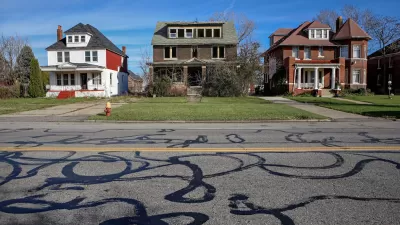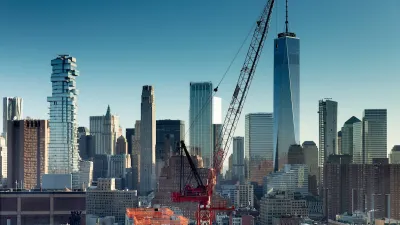Efforts by the city and residents have generated 17,000 new housing units in the last five years.

Detroit’s effort to rehab vacant homes and create new affordable housing units is paying off, thanks in part to the efforts of regular citizens. In a piece republished in Strong Towns, Alex Alsup zeroes in on one immigrant enclave that has experienced a major transformation since 2020.
“The area is found in the western corner of Detroit’s Midwest neighborhood, bounded by Tireman to the north, Livernois to the east, West Warren to the south and the Joe Louis Greenway/Dearborn border to the west.” Alsup worked with Michael Hudson to survey roughly 1,000 homes in the area via Google Street View, capturing the changes that occurred since 2020.
Their findings are impressive: “Over the past five years, 125 homes in the Midwest neighborhood have been reoccupied, increasing the number of occupied homes in the area by 22%. An additional 75-80 homes have undergone substantial rehab, though they remained occupied throughout the last five years.” The number of vacant homes in the area fell by 70 percent, and only 13 percent of reoccupied homes are owned by non-Detroit residents or entities. “Much of the inventory for rehab here seems to have been supplied by Detroit Land Bank sales: 77 of 125 reoccupied homes were owned by the Detroit Land Bank circa 2019,” signaling the importance of land banks as a conduit to affordable housing and homeownership.
For Alsup, “The story of the Midwest neighborhood is a testament to what can happen when communities take the lead in revitalizing their neighborhoods. It's a model that the city should not only acknowledge but actively support.”
FULL STORY: A Closer Look at Five Successful Years of Housing Rehab in Detroit

Alabama: Trump Terminates Settlements for Black Communities Harmed By Raw Sewage
Trump deemed the landmark civil rights agreement “illegal DEI and environmental justice policy.”

Planetizen Federal Action Tracker
A weekly monitor of how Trump’s orders and actions are impacting planners and planning in America.

The 120 Year Old Tiny Home Villages That Sheltered San Francisco’s Earthquake Refugees
More than a century ago, San Francisco mobilized to house thousands of residents displaced by the 1906 earthquake. Could their strategy offer a model for the present?

In Both Crashes and Crime, Public Transportation is Far Safer than Driving
Contrary to popular assumptions, public transportation has far lower crash and crime rates than automobile travel. For safer communities, improve and encourage transit travel.

Report: Zoning Reforms Should Complement Nashville’s Ambitious Transit Plan
Without reform, restrictive zoning codes will limit the impact of the city’s planned transit expansion and could exclude some of the residents who depend on transit the most.

Judge Orders Release of Frozen IRA, IIJA Funding
The decision is a victory for environmental groups who charged that freezing funds for critical infrastructure and disaster response programs caused “real and irreparable harm” to communities.
Urban Design for Planners 1: Software Tools
This six-course series explores essential urban design concepts using open source software and equips planners with the tools they need to participate fully in the urban design process.
Planning for Universal Design
Learn the tools for implementing Universal Design in planning regulations.
Clanton & Associates, Inc.
Jessamine County Fiscal Court
Institute for Housing and Urban Development Studies (IHS)
City of Grandview
Harvard GSD Executive Education
Toledo-Lucas County Plan Commissions
Salt Lake City
NYU Wagner Graduate School of Public Service





























